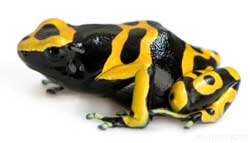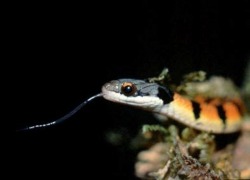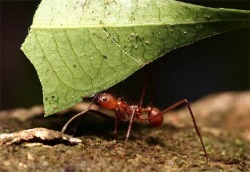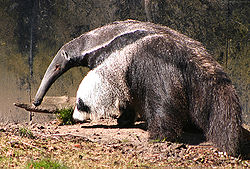In a predator and prey relationship, the predator consumes the prey as a food source. Even some of the most deadliest species get consumed and even the fastest.
Predator or Prey?

This is the Poison Dart Frog it is located in the Amazon Rainforest. The poison part in there name is definitely true. A little frog being very small but extremely poisoness. Glands in the skin produce a poison, a neurotoxin, which acts on the nervous system. It eats small terrestrial invertebrates. Mostly insects like small beetles and other small prey. Also they eat small new born crickets. South American indigenious tribes used this poison on their arrow tips. It kills it's food by paralyzing the prey and then it consumes it. This tiny frog is the predator, not the prey. But it easily could be the prey in the snap of an eye. Poison Dart Frog - worlds most poisonous animal. It's poison is enough to kill 10 strong men at a go, or better still, 15,000 rats, quote from wikipedia.
Prey or Predator?

This is the Amazon Ground Snake.. In this case the Amazon Ground Snake is the predator. The Amazon Ground Snake is immune to the poison from the Poison Dart Frog. Immune means that the Poison Dart frog's poison does not affect the Amazon Ground Snake. This makes the Amazon Ground Snake a predator to the Prey, the Poison Dart Frog. Normally the frog would be predator but being one of the most poisoness frogs or living thing in the world it should be predator, but it's not to this snake. This is the only snake in the rainforest that can kill this frog and actually eat this frog. Honestly, i'm pretty sure theres other things too, but not discovered yet. Scientists are still working on getting all the data from the rainforest they could get. I would write more but this snake isn't very well known. What I do know is that if you come across this little friend, I would run if I was you.
Article by Mary Matthews.
Predator or Prey?

This is the Leaf Cutter Ant. Leaf Cutter ants have a very specialized system where very ant has a job like, colony defenders, young ant caretakers, leaf cutters, gardeners and foragers. The Leaf Cutter ants even use an agriculture system, gathering fragments from different species of plants and trees to use in their fungus gardens that provide their food source. The Leaf Cutter ant live on the forest floor and usually build and underground tunnel and chamber complex where they work on their fungus gardens and get protection from outside threats. Differently than many other species, the Leaf Cutter ants are not endangered, but if the Amazon Rain forest disappears, they will definitely vanish too.
Prey or Predator?

This is the Giant Anteater. It is the largest species of anteaters. It feeds mainly on ants and termites, being able to more then 30,000 insects in a day. Giant Anteaters do not have teeth so how do they eat all those bugs? Inside it's body, are hard rocks and sand that help crush the insects to make it easier to digest. Kind of like how some dinosaurs eat rocks so they can chew their plants or something.
The giant anteater is covered straw-like hair that grows up to 40 cm long on the tail. The young have soft hair until they are older. Most fur on giant anteaters have grey or brown colors and all have a diagonal black and white shoulder stripe.
When threatened, the Giant Anteater stands up on its hind legs using its tail to balance, and may strike quickly with its claws. An adult anteater is capable of fending off or even killing main predators like jaguars or cougars.
The giant anteater is covered straw-like hair that grows up to 40 cm long on the tail. The young have soft hair until they are older. Most fur on giant anteaters have grey or brown colors and all have a diagonal black and white shoulder stripe.
When threatened, the Giant Anteater stands up on its hind legs using its tail to balance, and may strike quickly with its claws. An adult anteater is capable of fending off or even killing main predators like jaguars or cougars.
Article by Ashley Nguyen.
